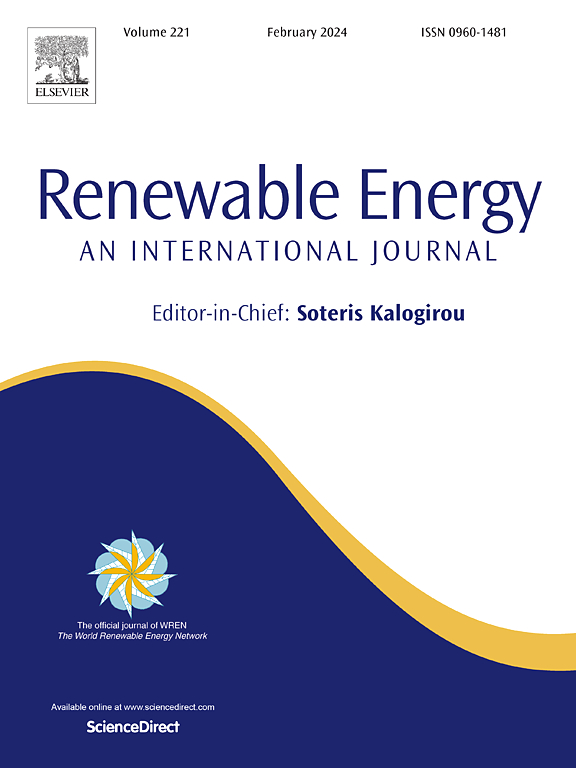推进可持续电动汽车充电基础设施:具有需求响应功能的太阳能-风能混合快速充电站
IF 9
1区 工程技术
Q1 ENERGY & FUELS
引用次数: 0
摘要
本研究旨在设计一种带有储能系统(ESS)的高效太阳能-风能混合快速充电站,以最大限度地提高充电站效率并减少对电网的依赖。研究采用蒙特卡罗模拟来捕捉可再生能源(RES)的不确定性,建立随机电动汽车(EV)驾驶员行为和车队多样性模型,并利用 Erlang B 队列模型进行电动汽车负载需求估算。为了在二元连续解空间中进行高效优化,采用了二元轨道搜索优化算法(B-GOA)和非支配拥挤排序优化算法(NCSOA)相结合的混合优化方法。研究结果表明,与现有方法相比,所提出的方法性能更优越,高 RES 渗透率大大降低了对电网的依赖。这项研究有助于推动可持续电动汽车充电基础设施的发展,并通过提高负载灵活性和需求响应管理来增强整体电网的稳定性。分析表明,方案 IV 最具经济可行性,净现值最高,为 1,025,895.32 欧元。大多数方案倾向于使用 5 台充电器(44-46 千瓦)和 4 台 3 类风力发电机。电池容量差异很大(108-372 千瓦时),电网连接也是如此(0-292 千瓦)。尽管初始投资各不相同,但方案 II-VII 显示出一致的 4 年内部收益率,表明不同配置具有良好的经济潜力。本文章由计算机程序翻译,如有差异,请以英文原文为准。
Advancing sustainable EV charging infrastructure: A hybrid solar-wind fast charging station with demand response
This study aims to design an efficient hybrid solar-wind fast charging station with an energy storage system (ESS) to maximize station efficiency and reduce grid dependence. The research employs Monte Carlo simulation to capture renewable energy source (RES) uncertainties, models stochastic electric vehicles (EVs) driver behavior and fleet diversity, and utilizes an Erlang B queuing model for EV load demand estimation. A hybrid optimization approach combining the Binary-Gravitational Search Optimization Algorithm (B-GOA) and the Non-dominated Crowding Sort Optimization Algorithm (NCSOA) is implemented for efficient optimization in a combined binary-continuous solution space. Results demonstrate superior performance of the proposed approach compared to existing methods, with high-RES penetration significantly reducing grid reliance. This study contributes to advancing sustainable EV charging infrastructure development and enhancing overall grid stability through improved load flexibility and demand response management. The analysis reveals Scenario IV as the most economically viable, with the highest Net Present Value of 1,025,895.32€. Most scenarios favor 5 chargers (44–46 kW) and 4 Type 3 wind generators. Battery capacity varies widely (108–372 kWh), as does grid connection (0–292 kW). Despite varying initial investments, Scenarios II-VII show a consistent 4-year Internal Rate of Return, indicating good economic potential across different configurations.
求助全文
通过发布文献求助,成功后即可免费获取论文全文。
去求助
来源期刊

Renewable Energy
工程技术-能源与燃料
CiteScore
18.40
自引率
9.20%
发文量
1955
审稿时长
6.6 months
期刊介绍:
Renewable Energy journal is dedicated to advancing knowledge and disseminating insights on various topics and technologies within renewable energy systems and components. Our mission is to support researchers, engineers, economists, manufacturers, NGOs, associations, and societies in staying updated on new developments in their respective fields and applying alternative energy solutions to current practices.
As an international, multidisciplinary journal in renewable energy engineering and research, we strive to be a premier peer-reviewed platform and a trusted source of original research and reviews in the field of renewable energy. Join us in our endeavor to drive innovation and progress in sustainable energy solutions.
 求助内容:
求助内容: 应助结果提醒方式:
应助结果提醒方式:


